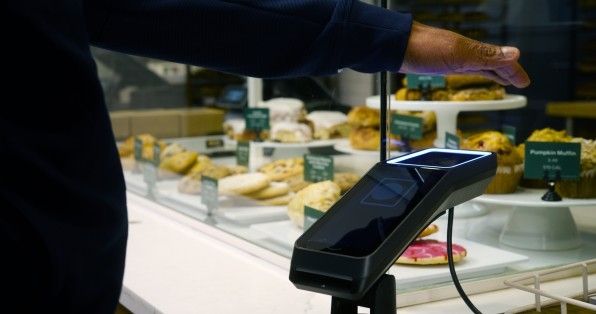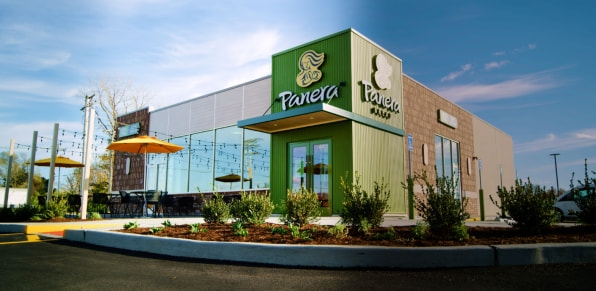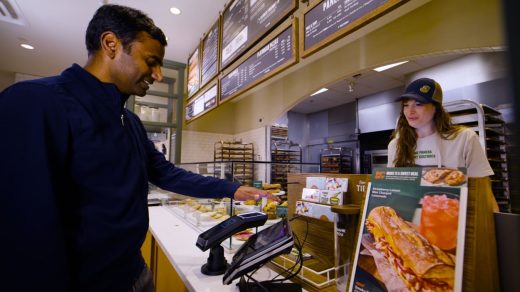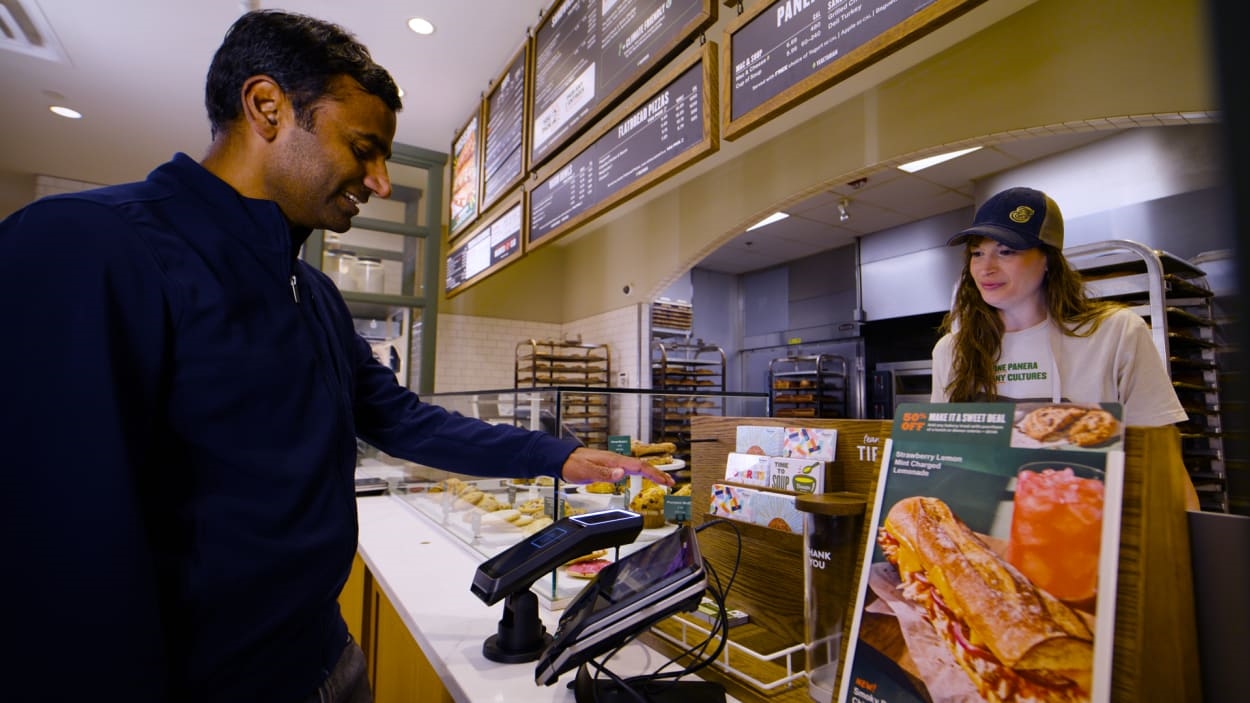Panera’s Amazon-powered pay-by-palm tech hands convenience another win
In January 2019, TripAdvisor level 5 reviewer Megan Howdy was mad. The Panera in Olympia, Washington, that she visited on her lunch break was not up to snuff.
“I’d give this review less stars if it wasn’t for the fact that I like Panera,” Howdy wrote. “I went in after work two weeks ago and was shocked to hear that they were out of my favorite—tuna! Starving, I went with a plan B but was so bummed to not get what I wanted. I went in today for lunch and waited behind the person ordering for 5 minutes as I watched 6 employees wandering around looking like they didn’t know they were at work. Only to be told, yet again, that they were out of tuna. That is one of your tried-and-true sandwiches! How can you be out at 3 p.m. on a Monday? I am fed up with the crappy service and lack of stock. I just wasted a good chunk of my lunch break. Won’t be back until this location gets better managed.”
For all the Megan Howdys out there who’ve been frustrated with a similar ordering experience, take heart: The wait time in line to order will probably be shorter, and Panera will likely have fewer employees wandering around looking like they didn’t know they were at work.
That’s because this week, sandwich-and-soup chain Panera started rolling out Amazon One technology at two of its restaurants near the company’s St. Louis headquarters. A quick, contactless service, Amazon One lets customers pay by scanning their palms (it’s based on biometrics, reading a user’s palm print for identification). Panera hopes that the new feature will reduce customer wait times and make it an even more convenient and efficient casual-dining destination. (No word on the chain’s tuna supply.) Panera has plans to roll out the payment service to hundreds of locations by year’s end and is still hammering out the terms of its agreement with Amazon.
Amazon One, though, is just one of the new technologies aimed at automating more jobs in the food-service industry and helping restaurants serve more customers quickly—albeit soullessly—and turn a bigger profit. Soon, the checkout employee will be a thing of the past.
This kind of tech implementation comes after several tough years for restaurants. First came lockdowns, which prevented customers from eating on site. But once crowds were able to start coming back, they had to contend with higher prices due to inflation’s rising costs of ingredients. On top of that, the labor market hasn’t fully recovered: As of January 2023, the restaurant labor force is more than 450,000 jobs below pre-pandemic levels, according to the Bureau of Labor Statistics.
Sandeep Satish, a VP at Levy (the food-service company best known for serving sports and entertainment venues) and managing director of DBK Studio, which helps pilot hospitality-driven technologies across Levy’s partners, says that rather than eliminating jobs, seamless checkout solutions, such as Amazon One and Clear, free up employees to help educate customers on using the technology and develop better relationships with them. “We look at labor optimization, but that’s really secondary because these technologies give us an opportunity to move labor from less transactional roles like a cashier to more guest-facing,” says Satish. Still, it’s hard to believe cost-cutting isn’t part of the picture, which Satish concedes, since in the long run, food kiosks may need fewer employees.

The same trend is also happening at coffee shops. The suddenly ubiquitous New York-based chain Blank Street Coffee outfits its outposts with Eversys automatic espresso systems, thereby allowing the small number of baristas to spend more time interacting with customers. That, according to cofounder Vinay Menda, is what customers really want when they look for a third place between home and work. “If you just look at the coffee market, broadly speaking, in the U.S., roughly 80% of customers generally are getting coffee to go. So it’s important for brands to have seating . . . but I don’t think a ‘third place’ means a place to hang out,” he told me last week. “I think [a third place] is just a place where you feel the connection with the person serving you.” A better explanation might be that automation lets companies hire fewer employees but compensate them better: Many Blank Street coffee shops are run by only two employees.

While Panera is working to deploy the Amazon One technology to 10 to 20 more restaurants, the Amazon Go stores, where it was first implemented, are struggling. This week, the company announced it would shutter eight of its automated (read: no cashier) convenience stores in Seattle, New York, and San Francisco. There’s a lot to like about Panera: excellent soups and flatbreads, unlimited coffee, and food subscriptions. And there was a lot to dislike about Amazon Go stores, from the concern that they could displace independent bodegas and corner stores to their freaky sterility.
Amazon’s technology may make more sense serving the existing experiences to be more efficient rather than equip retail outlets the company builds itself. Either way, it’s still a win for Amazon. Though Panera’s chief digital officer George Hanson says that Amazon will not have access to data on its customer orders, Amazon still will be able to see and log where and when someone uses Amazon One. The process also makes customers even more entrenched in the Amazon ecosystem and harder to disentangle from it.
Recently, as I was in transit, I stopped by a Panera kiosk at the Salt Lake City airport. I stood in a short line to get to an electronic screen that let me select and pay for my food in less than a minute. The food was ready just as fast. When an employee called my name for pickup, I said thank you and offered them a smile. By then, they had already disappeared, and I was surrounded again with screens.
(22)



